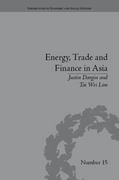Question
There is a community of 300 people who live in a village at site X and work at a pulp mill at site Y .
There is a community of 300 people who live in a village at site X and work at a pulp mill at site Y . Currently they travel between X and Y on Route 1, a route that is slow but sure - the one way trip takes them 20 minutes. Next week another route connecting X and Y will be opened, Route 2. If not too many people use Route 2, the one way trip takes a lot less than 20 minutes, but unfortunately Route 2 is subject to congestion - the more people who use Route 2, the longer it takes each of them to travel between X and Y . Specifically, the number of minutes needed to travel between the two points on Route 2 is T2= 8 + N2/10, where N2is the number of people using Route 2. The big question is this: when all the dust settles (that is, when equilibrium is reached) how many people will travel on Route 1 and how many will travel on Route 2? People are free to choose the route they take.
Preferences: People care about how much time the trip will take - the less time the better. If a commuter anticipates that the time spent on the two routes will be the same, she prefers Route2. (a) Let M be the number of people other than a representative commuter, REP, who chose Route 2. Then 299M is the number of people other than REP who choose Route 1. Construct a payoff functions for REP in the game in which all 300 citizens choose a route, either Route 1 or Route 2. Hint: since commuters want to minimize time spent commuting, to get a payoff function you can simply multiply time spent commuting by -1. (b) Use the payoff functions to find REP's best response function. (c) There are many Nash equilibria. But in all of them, the same number of people use Route 1 and the same number use Route 2. In equi- librium, how many people use Route 1 and how many use Route 2? Are the Nash equilibria Pareto-optimal? If you think not, pick one of the equilibria and find a strategy combination that Pareto-dominates it.
Step by Step Solution
There are 3 Steps involved in it
Step: 1

Get Instant Access to Expert-Tailored Solutions
See step-by-step solutions with expert insights and AI powered tools for academic success
Step: 2

Step: 3

Ace Your Homework with AI
Get the answers you need in no time with our AI-driven, step-by-step assistance
Get Started


